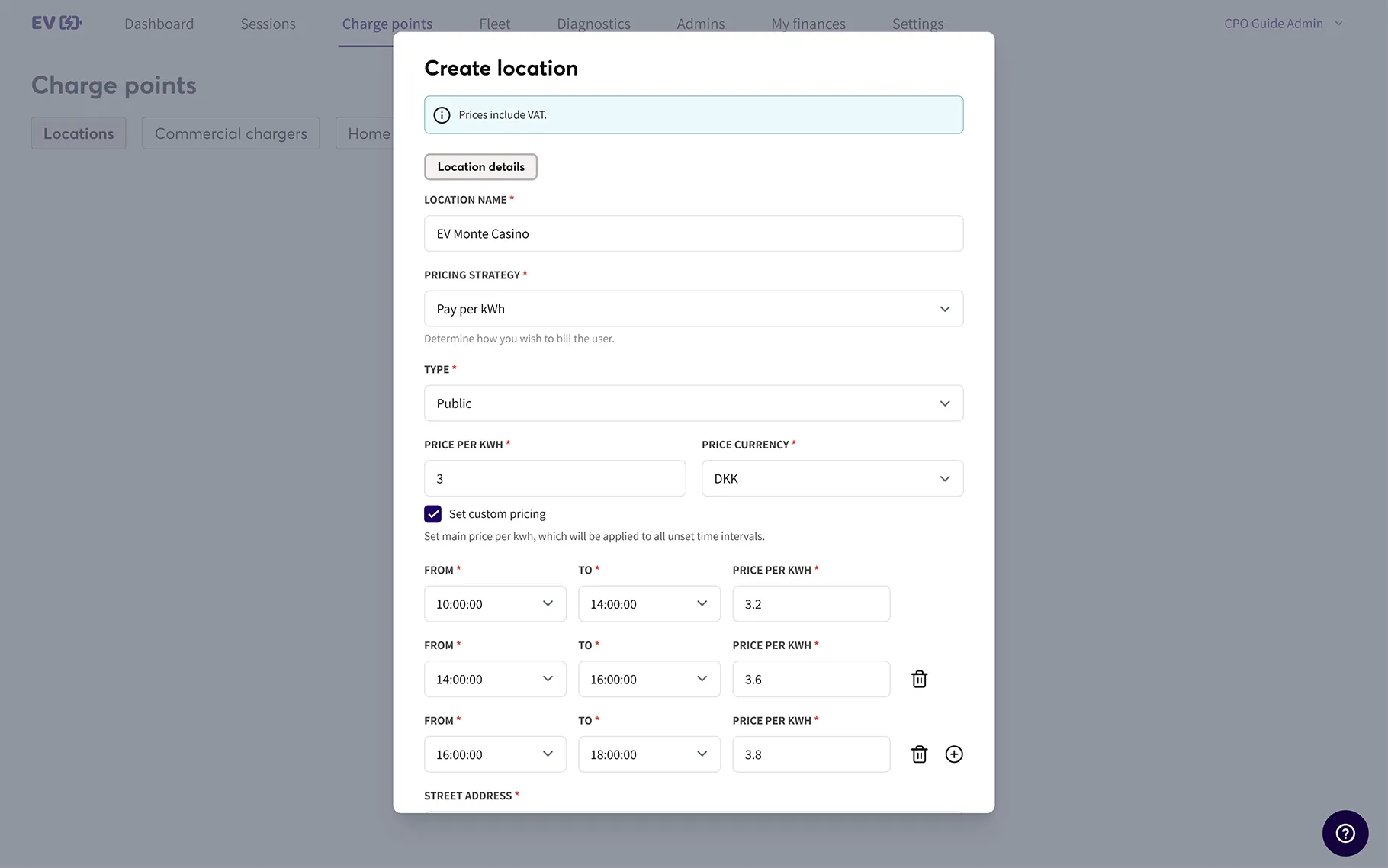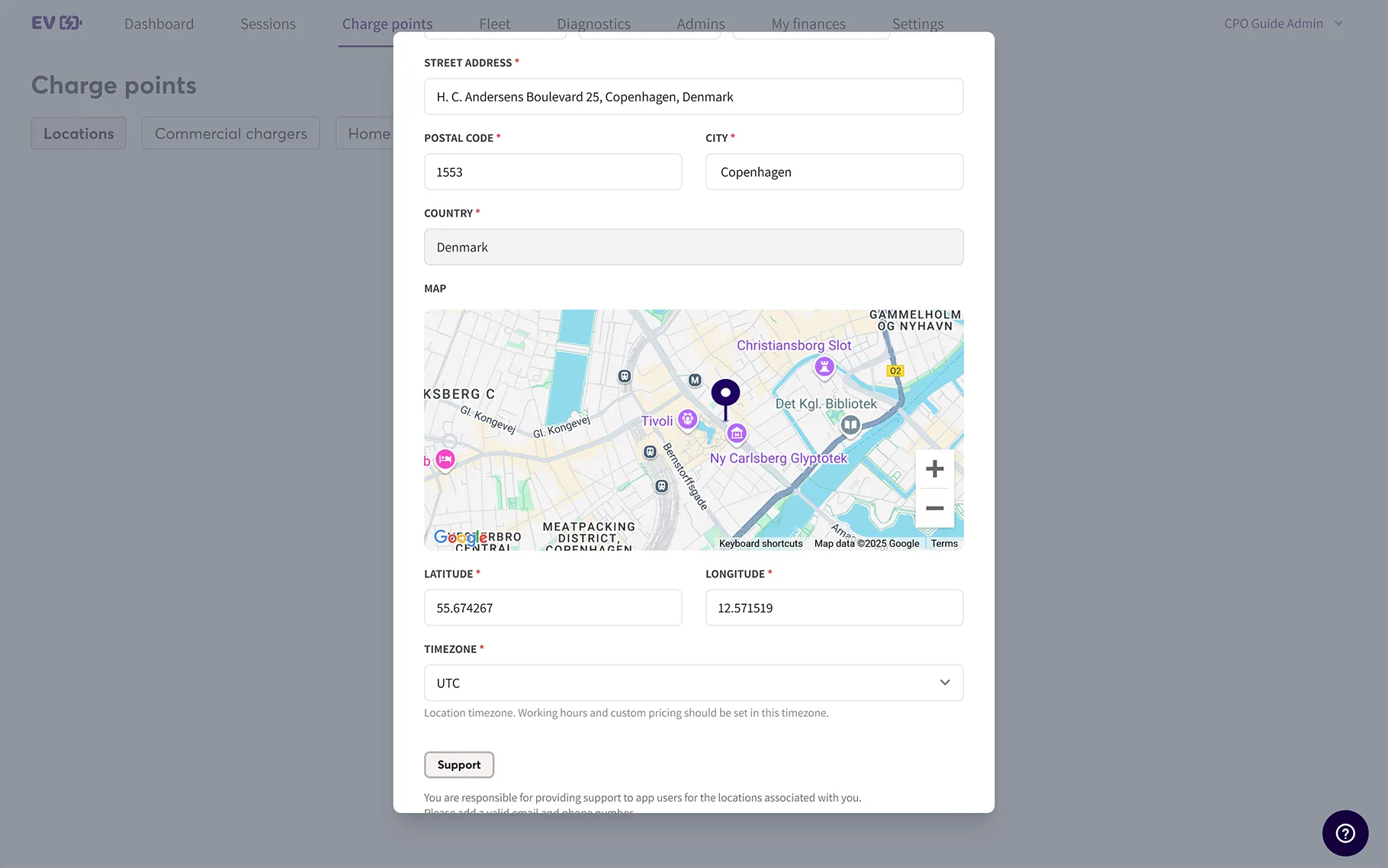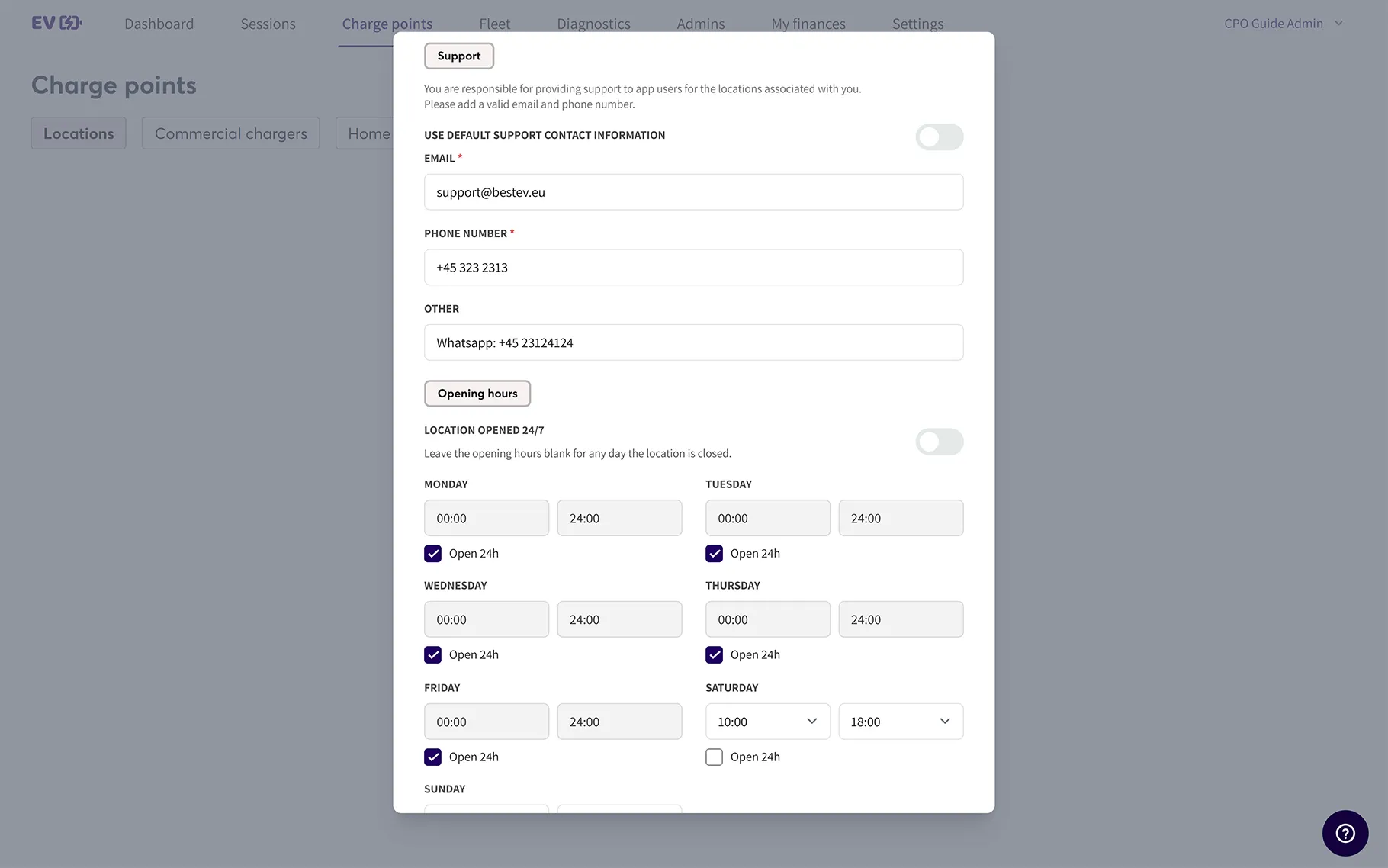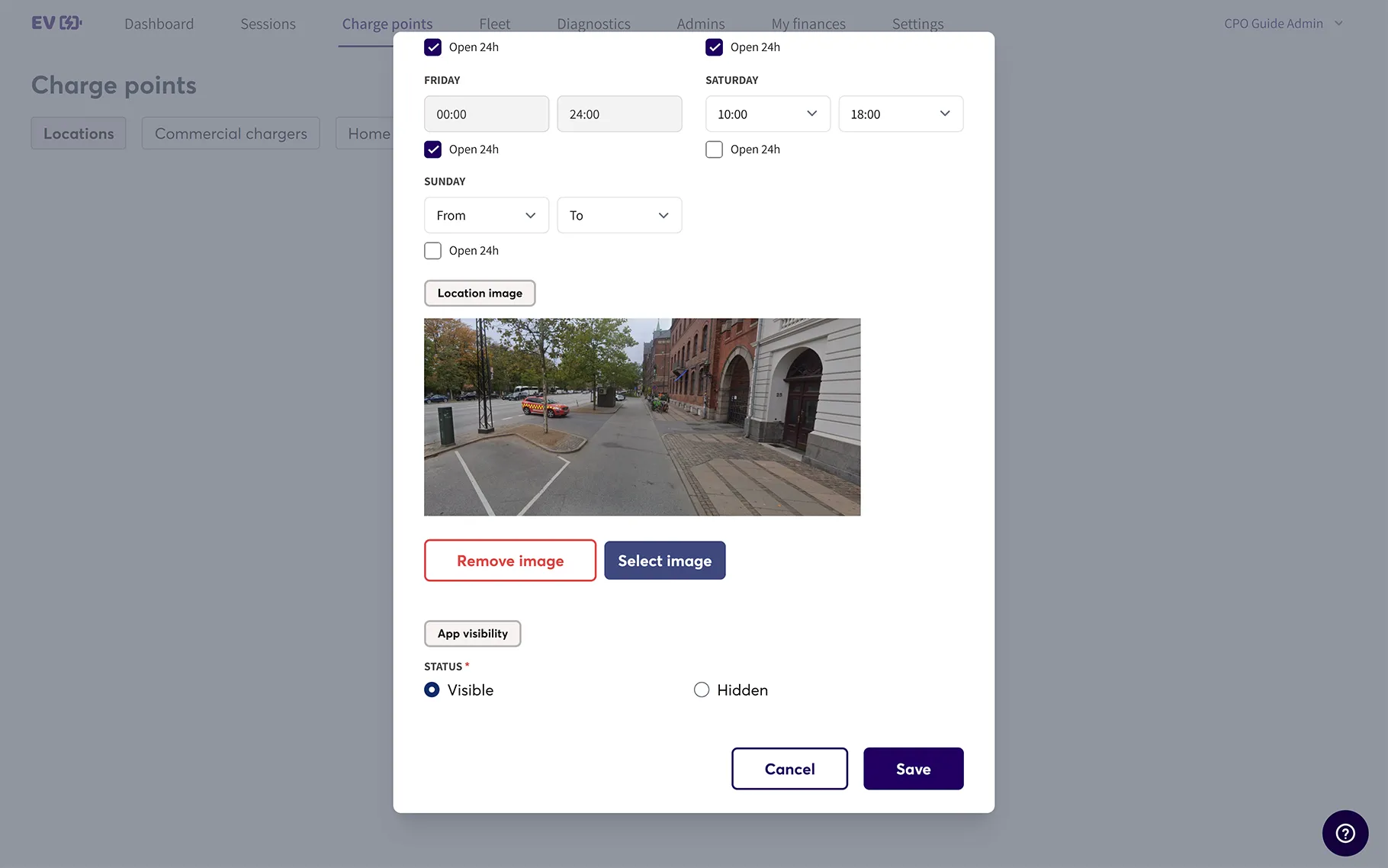Creating a Semi-public Location
This guide explains how to create a semi-public location in the EOSVOLT backend and configure its pricing, address, and visibility settings.
Navigate to “Charge Points”
- Go to the Charge Points tab in your EOSVOLT dashboard.
- Click the “Add Location” button to begin setup.
Name, Type, and Pricing Strategy

Location Name
The name you enter here will be displayed to users in the EOSVOLT mobile app.
Type
Select “Semi-Public” as the location type.
This determines that the location is visible only to authorized users in the app and available for public charging.
Pricing Strategy
You can set a price per kWh or per minute charged.
Price
Specify the price (included VAT) for this location.
If you’re using custom pricing, this default price will apply to all times not specified in your custom pricing setup.
Set Custom Pricing
CPOs can enable different pricing schemes for different times of the day.
- Configure time-based price blocks (e.g., 00:00–06:00, 06:00–12:00, 12:00–18:00, 18:00–24:00).
- Each block can have its own rate.
NoteThis pricing scheme applies to all days of the week.
If you’re using custom pricing, this default price will apply to all times not specified in your custom pricing setup.
Example
| Time Window | Price |
|---|---|
| 00:00–06:00 | USD 0.8 |
| 06:00–18:00 | USD 1.2 |
| 18:00–24:00 | USD 0.7 |
Blocking Fee
CPOs can enable a blocking fee to discourage vehicles from occupying a connector after charging has ended.
Parameters
- Blocking Fee — The amount charged per interval once the grace period elapses.
- Blocking Fee Interval — The time interval that serves as (1) the grace period before the first fee and (2) the cadence for repeated fees. Selectable values: 5 / 15 / 30 / 60 minutes.
Grace period The first Blocking Fee Interval acts as a grace period. No fee is charged until it fully elapses.
How it works
- Session ends → timer starts.
- First interval reached → charge 1× Blocking Fee and reset the timer.
- Each subsequent interval → charge another 1× Blocking Fee and reset the timer.
- Stops when the user unplugs the vehicle (connector is freed).
Example
- Blocking Fee: USD 1
- Blocking Fee Interval: 15 minutes
- At +15 min → charge USD 1
- At +30 min → charge USD 1
- At +45 min → charge USD 1, and so on until unplugged.
Idle detection (status-based)
The system monitors connector status for idled sessions.
If the connector remains in SuspendedEV for one full Blocking Fee Interval, the system will:
- Stop the transaction (if still open), and
- Start the blocking-fee timer as described above.
What isSuspendedEV?The EV has paused energy transfer (e.g., battery full) while still plugged in. The connector is occupied but not delivering power.
Address and Timezone

Address
Enter the physical address of your charging location. This address will be shown in the mobile app.
Pin
The location pin will be automatically placed based on the entered address. If it’s not accurate, you can drag and drop the pin to fine-tune the exact location.
Timezone
Select the timezone for this location. This ensures bookings, pricing, and opening hours display correctly for users.
Support and Opening Hours

Support
You can assign specific support contact details for this location or use your default CPO support information.
The support details entered during the first location setup are automatically saved as the default.You can adjust the default support info later under the Settings tab.
Opening Hours
Define the opening hours for the location — by day of the week and time range.
Location Image and Visibility

Location Image
Upload an image of the location to help users recognize where chargers are placed — e.g., inside a large parking area.
App Visibility
You can choose to make the location:
- Visible in the app (public)
- Hidden (for private or restricted access locations, such as residential complexes)
The location becomes visible on the map only after at least one charger is added to it.
Hidden affects visibility, not access. The location won’t appear in search, but users can still charge.
Updated about 2 months ago
